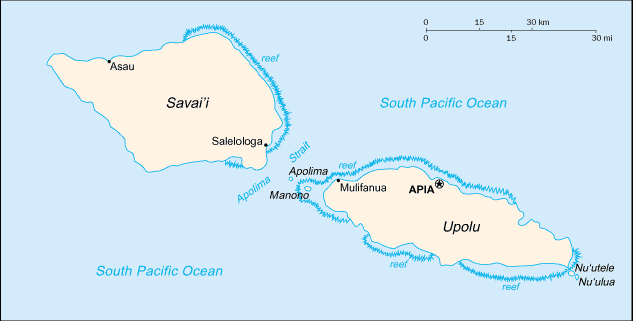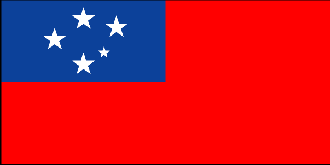
|
Samoa
Background:
New Zealand occupied the German protectorate of Western Samoa at the outbreak
of World War I in 1914. It continued to administer the islands as a mandate and
then as a trust territory until 1962, when the islands became the first
Polynesian nation to reestablish independence in the 20th century. The country
dropped the "Western" from its name in 1997.
|

Climate and Terrain:
Tropical; rainy season (October to March), dry season (May to October)
Narrow coastal plain with volcanic, rocky, rugged mountains in interior.
Elevation extremes: Lowest point: Pacific Ocean 0 m, highest point: Mauga
Silisili 1,857 m.
Natural resources: Hardwood forests, fish, hydropower.
Land use: Arable land: 19%, permanent crops: 24%, forests and woodland: 47%.
|
|
|
Economy overview:
The economy of Samoa has traditionally been dependent on
development aid, family remittances from overseas, and agricultural exports.
The country is vulnerable to devastating storms. Agriculture employs two-thirds
of the labor force, and furnishes 90% of exports, featuring coconut cream,
coconut oil, and copra. Tourism is an expanding sector, accounting for 15% of
GDP; about
85,000 tourists visited the islands in 2000.
Labor force - by occupation: agriculture 65%, services 30%, industry 5%.
Industries: Food processing, building materials, auto parts.
|
|